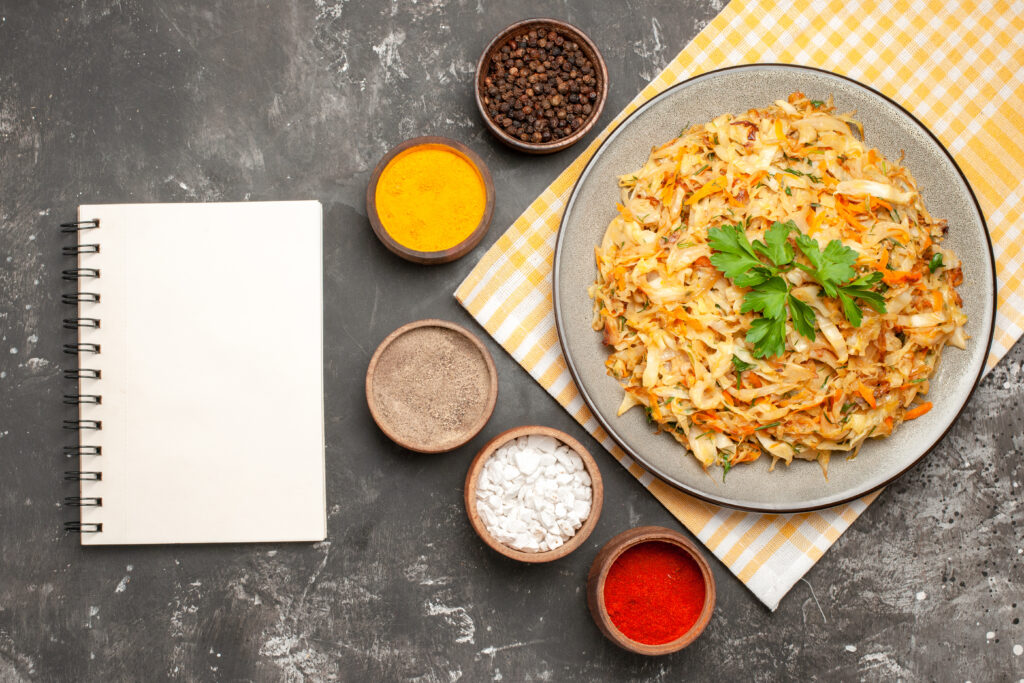Fried rice is the dish you keep in your back pocket for nights when you want something fast, satisfying, and flexible. This fried rice recipe turns leftovers into dinner, welcomes almost any vegetable, and tastes great even when you cook in a regular skillet. The version here focuses on speed and flavor. You’ll see why day‑old rice matters, how to balance the sauce, and the simple sequence that keeps the grains fluffy instead of mushy. You’ll also find answers to common questions and clear steps for variations like pork, vegetable, chicken, egg, and Chinese restaurant–style fried rice.
Why this works
Perfecting the Fried Rice Recipe
At its core, fried rice is about texture and heat. Dry, cold rice fries instead of steaming. A hot pan gives you light browning and those toasty bits that make each bite interesting. A small, balanced sauce seasons the rice without weighing it down. If you cook in the right order—protein first, eggs second, aromatics and vegetables next, rice last with sauce—you can finish a full batch in around 15 to 20 minutes.
What are the ingredients for fried rice?
The essentials are straightforward. You’ll need cooked rice, preferably a day old and chilled. Jasmine rice is common because it stays separate and fragrant, but any medium‑grain works. Eggs bring richness and that classic “egg ribbon” texture. Aromatics like garlic, ginger, and scallions lay the foundation. Quick‑cooking vegetables such as peas, carrots, corn, onions, and bell peppers add color and sweetness. For protein, choose chicken, pork, shrimp, tofu, or keep it vegetable‑only. Use an oil with a high smoke point—peanut, canola, or another neutral oil. For the sauce, combine light soy sauce for salt and umami, oyster sauce for depth, a small amount of sesame oil for aroma, and a pinch of white pepper for gentle heat. Optional boosters include Shaoxing wine or dry sherry for aroma, chili crisp or a mild chili sauce for heat, a knob of butter at the end for gloss, or a little MSG or mushroom powder for savory lift.
The rice itself matters more than any sauce. When the grains are dry and cool, they separate in the pan and take on seasoning without turning mushy. If you only have freshly cooked rice, spread it on a baking sheet to steam off and cool quickly. The goal is to remove surface moisture.
What is the secret for fried rice recipe?
The “secret” is a handful of small practices that add up:
- Start with dry, cold rice so it fries instead of steaming.
- Use high heat and a wide pan or wok to encourage quick browning.
- Cook in batches: protein first, remove; eggs next, remove; aromatics and vegetables; then rice; finally combine everything with sauce.
- Let the rice sit in the hot pan for short bursts so it sears before you stir again. Constant motion isn’t the goal; precise timing is.
- Keep the sauce modest. You want every grain coated but never soggy.
- Finish with scallion greens and sesame oil off the heat so the fresh aroma stays bright.
These steps show up in professional kitchens because they solve the two biggest problems home cooks face: clumping and sogginess. High heat helps develop light browning, while controlled stirring prevents breaking the grains.
What are the 5 ingredients in fried rice?
If you want a minimalist approach, you can make a solid fried rice with just rice, eggs, soy sauce, scallions, and oil. Add peas for color if you like, but even without them you’ll get something satisfying. The trick is getting the texture right and not overdoing the soy sauce. A small splash goes a long way when the rice is properly fried.
How to make fried rice in 5 steps?
- Prep everything before you heat the pan. Break up any clumps in the cold rice. Chop garlic, ginger, and scallions. Mix your sauce in a small bowl.
- Sear your protein if you’re using one, then remove it. Scramble the eggs softly, then remove.
- Stir‑fry aromatics and vegetables over high heat until fragrant and lightly browned.
- Add more oil if the pan looks dry, then add the rice. Spread it out, let it sear, and only then start tossing. Return the protein and eggs.
- Pour in the sauce around the edges, toss to coat evenly, finish with sesame oil and scallion greens, and season to taste.
That’s the entire system, and it scales up or down easily as long as you avoid crowding the pan.
Best weeknight base
Here’s a dependable base that serves four and comes together fast. Cold jasmine rice works best, but medium‑grain is fine. The sauce balances savory, sweet, and aromatic notes without overpowering the rice.
- 4 cups cold cooked jasmine rice
- 2 large eggs, lightly beaten
- 2 cups mixed vegetables (frozen peas and carrots are ideal)
- 2 scallions, thinly sliced (keep whites and greens separate)
- 2 cloves garlic, minced
- 1 teaspoon grated ginger
- 1 to 2 tablespoons neutral oil, plus more as needed
- Sauce: 2 tablespoons light soy sauce, 1 tablespoon oyster sauce, 1 teaspoon sesame oil, pinch white pepper
- Optional: 1 tablespoon Shaoxing wine or dry sherry, 1 teaspoon butter, chili crisp to taste
Heat the pan until very hot, then add oil. Scramble the eggs until just set and remove. Stir‑fry garlic, ginger, and scallion whites with the vegetables. Push them aside, add a bit more oil, and add the rice. Break up clumps, spread the rice, and let it sear before tossing. If using Shaoxing wine, splash it around the edge so it hisses and evaporates quickly. Add the soy and oyster sauce mixture. Toss until the grains are evenly coated, then return the eggs. Finish with sesame oil, scallion greens, and optional butter. Taste and adjust with a touch more soy or a pinch of salt.
Pork fried rice recipe
Pork adds a savory, slightly sweet note that fits fried rice perfectly. If you have char siu, dice it and toss it in for instant flavor. If not, quick‑marinate diced pork shoulder or tenderloin: a teaspoon each of soy sauce and oyster sauce, a half teaspoon of sugar, and a pinch of white pepper. Sear the pork over high heat until browned and just cooked through, then move it out of the pan. Proceed with the base method. Add bean sprouts and diced onion for crunch and sweetness. Return the pork at the end with the eggs so it stays tender. A small drizzle of sesame oil and scallion greens finishes it cleanly. The key is caramelizing the pork without steaming it, which means working in a single layer and giving it space.
Vegetable fried rice recipe
Vegetable fried rice feels fresh and light when you vary shapes and textures. Use peas, carrots, corn, bell pepper, broccoli stems cut into small matchsticks, and edamame. Keep the pieces small so they cook quickly. If you want protein without meat, add diced extra‑firm tofu that’s been patted dry and seared until golden on at least two sides before the vegetables go in. For a vegetarian sauce, use a mushroom‑based oyster‑style sauce in place of regular oyster sauce. Finish with a squeeze of lime if you want brightness. The rhythm is the same: aromatics first, vegetables second, rice third, then sauce. Keep the pan hot and avoid piling in too many vegetables at once. If you’re using frozen vegetables, don’t thaw them fully; add them straight to the hot pan so they steam off quickly and avoid getting watery.
Chicken fried rice recipe
Chicken thighs are ideal because they stay juicy under high heat. Dice about eight ounces of thigh meat and toss with a teaspoon of soy sauce, a teaspoon of cornstarch, and a teaspoon of oil. The cornstarch forms a light coating that helps browning and keeps the meat tender. Sear the chicken in a single layer until browned, then remove. Keep the vegetables simple: diced carrot and peas are classic. Add a small knob of butter at the end if you like a richer finish, which plays nicely with the soy and oyster sauce. Taste before you add more salt because the sauces are already salty. If you prefer chicken breast, keep the pieces small and don’t cook them more than necessary to avoid drying out.

Egg fried rice recipe
Egg fried rice is the purest expression of the dish. Use three or four eggs so they star in the bowl. There are two good approaches. Egg‑first gives you silky, scattered egg ribbons. Scramble the eggs soft, remove them, and add them back at the end. Egg‑last gives chunkier pieces. Pour the beaten eggs over the rice after you’ve added the sauce, wait a few seconds, then toss so the egg sets in thin sheets that cling to the grains. Keep the seasoning simple: light soy sauce, sesame oil, scallions, and white pepper. This is a great choice when your fridge is bare and you only have rice, eggs, and a few aromatics.
Chinese fried rice recipe
Restaurant‑style fried rice uses high heat, small cuts, and a clean balance of savory and aromatic flavors. Focus on garlic, ginger, and scallion whites for the base, with peas and carrot in tiny dice. Season with light soy sauce, oyster sauce, a pinch of sugar to round edges, and white pepper. A small splash of Shaoxing wine around the edges of the pan adds aroma that flashes off quickly. Many restaurants use a little MSG for a deeper savory note; you can add a pinch or use mushroom powder if you prefer. The rice should taste toasty and light, never heavy. Short tosses and brief rests against the hot surface give you that mix of tender grains and crisp bits.
Pro tips for busy nights
- Cook rice the night before or in the morning. Chill it uncovered for a bit to let steam escape, then cover.
- Keep a “fried rice kit” in the freezer: a bag of mixed vegetables, sliced scallion whites and greens, and diced cooked protein. It turns a pan of rice into dinner in minutes.
- Premix a house sauce in a small squeeze bottle so you don’t measure each time. A simple ratio is two parts light soy, one part oyster sauce, a little sesame oil, and white pepper.
- Use a large skillet if you don’t have a wok. The wider the pan, the easier it is to avoid steaming.
- Taste at the end. A few drops of soy for salt, a pinch of sugar to tame sharp edges, or a splash of rice vinegar if you want brightness.
Common mistakes to avoid
- Hot, wet rice. It steams and clumps. Cool it and break it up before frying.
- Overcrowding. Too much food in the pan lowers the temperature and prevents browning. Cook in batches if you need to.
- Too much sauce. It darkens the rice and makes it heavy. Keep the seasoning light and build flavor with heat and aromatics.
- Low heat. You won’t get browning. Preheat the pan until it’s very hot before adding oil.
- Skipping the final seasoning. A last taste with scallion greens and sesame oil brings it together.
Serving and storage
Fried rice is best right off the heat when the grains are still a little crisp. Serve with chili crisp or a mild chili oil if you want heat, more scallions for freshness, or a fried egg for extra richness. Leftovers keep well for three to four days in the fridge. Reheat in a hot pan with a splash of water to revive the steam inside the grains, then let it fry again for a minute to refresh the texture. If you plan ahead for lunches, portion into containers and tuck in a lime wedge or a small container of chili sauce for a quick finish at your desk.
Q/A
Can I make fried rice without day‑old rice? Yes. Spread freshly cooked rice on a baking sheet and let it steam off and cool for 30 to 60 minutes. Pop it in the fridge to firm up if you have time.
What oil should I use? Peanut, canola, sunflower, or any neutral oil with a high smoke point. Save extra‑virgin olive oil for other dishes.
Can I make it gluten‑free? Use tamari instead of soy sauce and a gluten‑free mushroom‑based oyster‑style sauce. Always check labels.
What vegetables work best? Anything that cooks fast and stays a bit crisp: peas, carrots, corn, bell peppers, asparagus tips, broccoli stems, sliced snap peas. Cut them small so they hit tenderness fast on high heat.
How do I get restaurant‑style char? Preheat the pan thoroughly, don’t crowd it, and let the rice sit in flat layers for short bursts before stirring. A splash of Shaoxing wine around the edges adds that aromatic note you associate with takeout.
Sourcing and technique notes
Cooks across East and Southeast Asia have treated fried rice as a practical way to use leftover rice for generations. You’ll see jasmine rice common in Southeast Asian kitchens and medium‑grain rice often used in Chinese‑American takeout. The idea of day‑old rice isn’t a gimmick—it’s a simple way to manage moisture. Restaurant kitchens rely on high heat to keep the grains distinct and build flavor quickly, which is why a hot pan and a wide surface area matter at home. The small balance of light soy and oyster sauce is standard in many professional recipes because it seasons the rice without turning it heavy or overly dark. White pepper adds warmth without dominating the dish. Shaoxing wine is a classic Chinese cooking wine that evaporates fast and contributes aroma; a dry sherry is the closest common substitute in many home kitchens.
FAQs
Can I make fried rice without day-old rice?
Yes. Spread freshly cooked rice on a tray to cool and dry for 30–60 minutes, then refrigerate briefly. Break up clumps before frying so the grains stay separate.
What’s the best oil for high heat?
Use a neutral, high-smoke-point oil like peanut, canola, or sunflower. Save toasted sesame oil for finishing so its aroma stays bright.
How do I keep fried rice from turning soggy?
Start with dry, cold rice, preheat the pan until very hot, and avoid crowding. Add sauce sparingly and in stages so you coat the grains, not drown them.
Do I need a wok to get good results?
No. A wide skillet works well. Give the rice room, sear it in thin layers, and let it sit briefly before tossing for light browning.
What protein works best on busy nights?
Leftover cooked chicken, pork, or shrimp are ideal. If starting raw, dice small, sear first, and set aside so it stays tender when you combine everything at the end.
Closing
A great fried rice recipe isn’t about a long list of ingredients. It’s about managing heat, moisture, and timing. Keep the rice dry, the pan hot, and the sauce modest. Cook in a simple sequence, give the grains time to sear, and finish with fresh scallions. From there, you can take it in any direction—pork for savory depth, vegetable for brightness, chicken for comfort, egg for simplicity, or a clean Chinese restaurant–style for that familiar takeout flavor. Once you get the rhythm, it becomes the weeknight hero you reach for without thinking.




















































